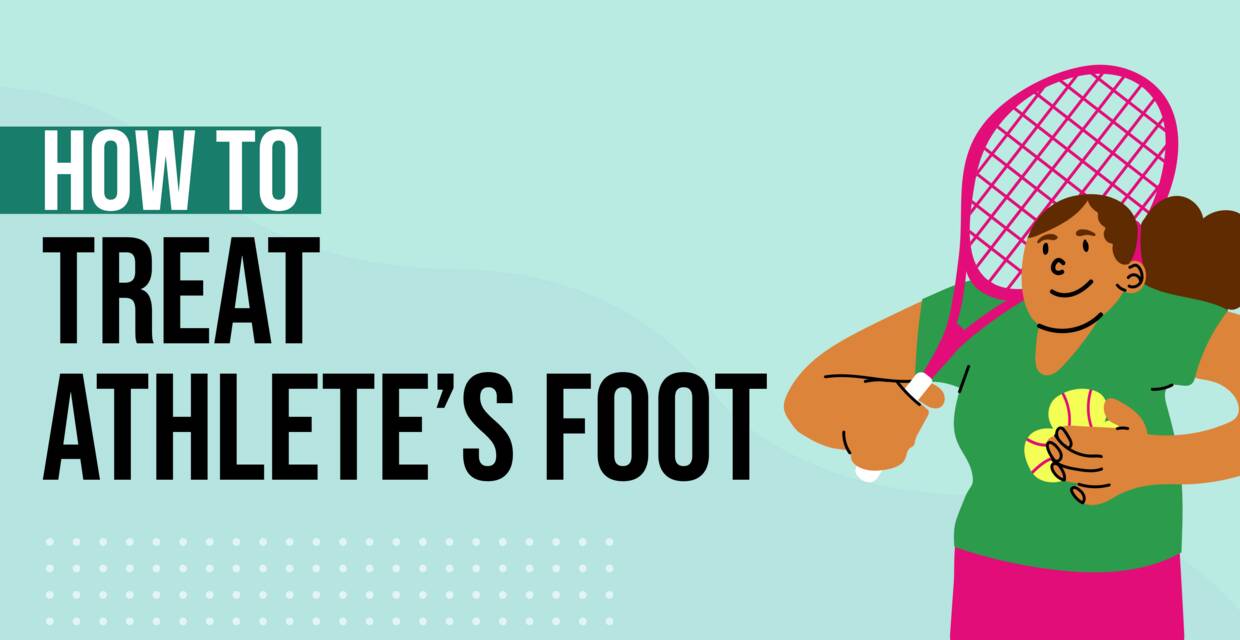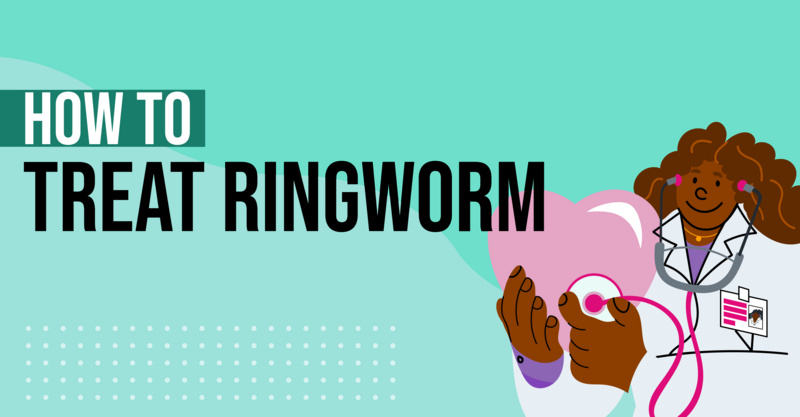Key Points
- Athlete's foot is a common fungal infection that thrives in warm, moist environments, causing discomfort and skin issues.
- Several home treatments can help manage athlete's foot, including over-the-counter antifungal creams, rubbing alcohol, tea tree oil, neem oil, Vicks VapoRub, and a hydrogen peroxide-iodine solution.
- Maintaining foot hygiene, wearing well-fitted shoes, and protecting feet in communal areas are crucial preventative measures.
- If symptoms persist after two weeks of self-treatment, or if you have diabetes and suspect athlete's foot, it's advisable to seek medical attention.
- The article emphasizes the importance of keeping feet clean and dry, wearing good shoes, and using over-the-counter treatments or home remedies to treat athlete's foot.
Athlete's foot is a fungal infection that affects the skin on the feet (usually between the toes), according to the Mayo Clinic. It is caused by a fungus that thrives in warm and moist environments (such as sweaty socks and shoes) and can be passed from person to person. The Mayo Clinic also notes that this fungus is closely related to ringworm and jock itch.
Athlete's foot can cause itching, burning, and stinging sensations, as well as dry and flaky skin, according to the Mayo Clinic. Fortunately, there are several effective ways to treat athlete's foot at home.
Home Treatment Options for Athlete’s Foot
1. Over-The-Counter Antifungal Creams
One of the most common treatments for athlete's foot is using over-the-counter antifungal creams, according to the Mayo Clinic. These creams are available at most retail pharmacies and contain active ingredients such as clotrimazole, miconazole, or terbinafine. These creams work by killing the fungus that causes athlete's foot.
The Mayo Clinic recommends applying the cream to the affected area and the surrounding skin, according to the instructions on the package. They note that it is important to continue using the cream for the recommended duration, even if your symptoms improve.
2. Rubbing Alcohol
Soaking your feet in a rubbing alcohol solution can also help treat athlete's foot, according to Healthline. They note that similar to hydrogen peroxide, alcohol can kill off the fungus on the surface level of the skin. To make an alcohol solution, Healthline recommends mixing 70% rubbing alcohol with 30% water and soaking the affected foot for 30 minutes.
3. Tea Tree Oil
Tea tree oil is a natural antifungal agent that can be used to treat athlete's foot, according to Healthline. To use tea tree oil, they recommend mixing a few drops of the oil with a carrier oil such as coconut oil or olive oil. Apply the mixture to the affected area and the surrounding skin, and leave it on for 30 minutes. After 30 minutes, rinse your feet with water and dry them thoroughly. It is important to avoid using undiluted tea tree oil, as it can cause skin irritation, according to Healthline.
4. Neem Oil
Neem oil has antifungal capabilities according to Healthline. This means that it may help treat athlete’s foot. Healthline recommends that you apply the neem oil directly to the affected area two to three times a day (massaging it into the skin).
5. Vicks VapoRub
Healthline notes that the eucalyptus oil and menthol in Vicks VapoRub may be able to help treat athlete’s foot because of their antifungal properties. If you want to try Vicks for athlete’s foot, Healthline recommends massaging it into the affected areas of your feet every night for at least one week after the fungal infection appears gone.
6. Hydrogen Peroxide with Iodine
A recent study cited by Medical News Today notes that hydrogen peroxide combined with iodine killed 16 different fungi—they believe that this combination may be beneficial for those with athlete’s foot. They note that you can mix a solution of hydrogen peroxide and iodine in a large bowl, then dip your feet in the solution—or use a cotton ball to apply it to the affected areas of your feet.
How to Prevent Athlete’s Foot
Athlete's foot is a common fungal infection that affects the feet, according to the Mayo Clinic. They note that it can also be contagious and spread quickly in communal areas like locker rooms. Fortunately, there are several ways to prevent athlete's foot.
1. Keeping Your Feet Clean
One of the most effective ways to prevent athlete's foot is to maintain proper foot hygiene practices, according to the Mayo Clinic. They note that if you are prone to athlete’s foot, you may want to watch your feet twice a day and gently towel-dry between your toes. This is especially important after activities that make you sweat.
2. Keeping Your Feet Dry
Moisture is one of the leading causes of athlete's foot, according to the Mayo Clinic. To prevent this, it is essential to keep your feet dry. Wearing socks made of breathable materials and changing them frequently can also help. You can also use foot powder to help absorb moisture and keep your feet dry.
3. Wear Good-Fitting Shoes
Tight-fitting shoes can trap moisture and create the perfect environment for fungal growth, according to WebMD. They note that it is essential to wear shoes that fit properly and allow your feet to breathe.
4. Protect Yourself in Communal Areas
Athlete's foot is contagious and can spread easily in communal areas such as locker rooms and communal showers, according to the Mayo Clinic. To prevent infection, it is essential to practice good foot hygiene in these areas. The Mayo Clinic suggests wearing shower shoes or sandals and avoiding walking barefoot.
When to See a Doctor for Athlete’s Foot
In most cases, athlete’s foot can be treated with home remedies or over-the-counter treatments. The Mayo Clinic notes, however, that there are some cases in which you should consult with a doctor—these include:
- A rash on your foot that doesn’t improve within 2 weeks of self-treatment with an over-the-counter antifungal product
- If you have diabetes and think you may have athlete’s foot, it's important to see your doctor right away.
Recap of Key Points
There are several simple and effective home treatments for athlete’s foot. Here are the key points to keep in mind:
- Protect yourself from athlete’s foot by keeping your feet clean and dry, wearing good-fitting shoes, and protecting yourself in communal areas.
- Use over-the-counter antifungal treatments or home remedies to treat your athlete’s foot.
Frequently asked questions
What is athlete's foot?
Athlete's foot is a fungal infection that typically affects the skin on the feet, especially between the toes. It can cause itching, burning, and dry, flaky skin.What are some home remedies for athlete's foot?
Some home remedies include over-the-counter antifungal creams, rubbing alcohol, tea tree oil, neem oil, Vicks VapoRub, and a hydrogen peroxide-iodine solution.How can I prevent athlete's foot?
You can prevent athlete's foot by maintaining good foot hygiene, keeping your feet dry, wearing well-fitted shoes, and protecting your feet in communal areas.When should I seek medical help for athlete's foot?
If your symptoms don't improve within two weeks of self-treatment with an over-the-counter product, or if you have diabetes and suspect you have athlete's foot, you should consult a doctor.What's the importance of wearing good-fitting shoes in preventing athlete's foot?
Wearing well-fitted shoes helps keep your feet dry and less susceptible to the warm, moist environments where the fungus that causes athlete's foot thrives.How do the home remedies for athlete's foot work?
These remedies work by killing the fungus causing the infection, helping to alleviate symptoms and clear up the infection.Can I use multiple home remedies at the same time?
It's generally safe to use multiple remedies, but it's always best to consult with a healthcare provider first to ensure there are no potential interactions or adverse effects.What's the best way to protect my feet in communal areas?
Wearing shower shoes or flip flops in communal areas like gyms, locker rooms, and public showers can help protect your feet from getting athlete's foot.
Solv has strict sourcing guidelines and relies on peer-reviewed studies, academic research institutions, and medical associations. We avoid using tertiary references.


 LinkedIn
LinkedIn










